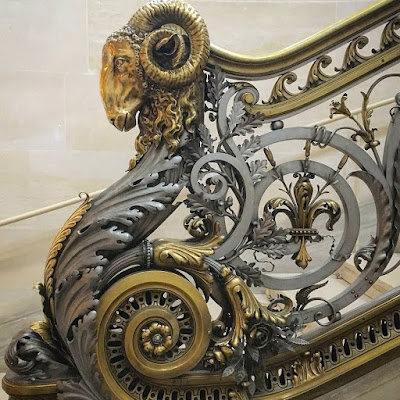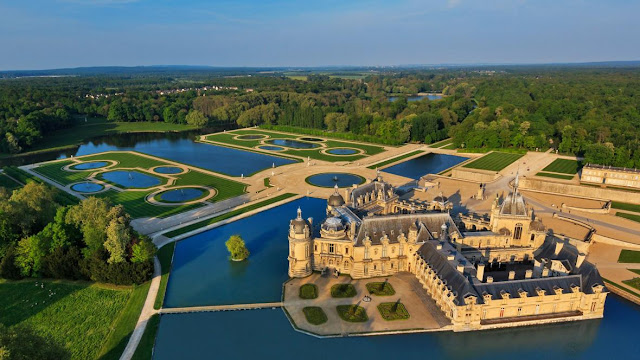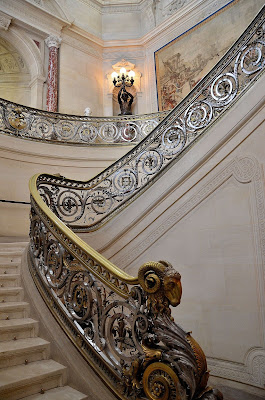
Located 40 kilometres north of Paris, in the Picardy region of France, this small town looks like it belongs to a fairytale. The Jewel in the crown of Domaine de Chantilly is the stunning 16th century Chateau, built for Anne de Montmorecy, and is undoubtedly one of the most astonishing French chateau venues near Paris.

It comprises two attached buildings; the Grand Château, destroyed during the French Revolution and rebuilt in the 1870s, and the Petit Château which was built around 1560 for Anne, Duc de Montmorency. It is now owned by the Institut de France, and is open to the public. The first mansion (no longer extant, now replaced by the Grand Château) was built in 1528-1531 for the Constable Anne de Montmorency by Pierre Chambiges. The Petit Château was also built for him, around 1560, and probably by Jean Bullant. The original mansion was destroyed in the French Revolution. It was repaired in a modest way by the last Condé, but then entirely rebuilt in 1875-1881 by Henri d’Orléans, duc d’Aumale (1822-1897) to the designs of Honore Daumet. The château’s art gallery, the Musée Condé, houses one of the finest collections of historical paintings in France (after the Louvre), with special strength in French paintings and book illuminations of the 15th and 16th centuries. The library of the Petit Château contains over 700 manuscripts and 12,000 volumes, including a Gutenberg Bible, Les très riches heures du Duc de Berry and Jean Fouquet’s Book of Hours of Etienne Chevalier.
Honoré Daumet was responsible for this jaw-dropping work of art that functions as the newel Post, balustrade and railing of this magnificent space. Wrought iron, copper, brass and bronze were morphed into an explosion of detail…the head of a ram, fleur di lis, the head of Medusa, the royal crown, initials of the Duke of Aumale, swords, floral embellishments as well as ribbons.








